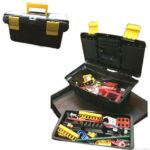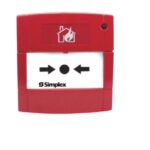Your list is empty, add products to the list to send a request
What is the safest fire helmet?

04
Apr
Safest Fire Helmet
The safest fire helmet isn’t just a piece of gear—it’s a lifeline. Whether dashing into a roaring blaze or responding to a hazmat call, a firefighter’s helmet must endure heat, impact, and chaos without faltering. Firefighters trust their lives to these helmets daily, and choosing the right one can mean the difference between life and death.
With innovations in material science, integrated communications, and ergonomic designs, today’s helmets are engineered to do more than just protect—they empower. But what truly defines the safest fire helmet? Is it the certifications it carries? The material it’s made of? Or the endorsements from the brave individuals who wear them?
Let’s delve deeper into what makes a fire helmet safe and explore the options you can trust.
What Makes a Fire Helmet Safe?
Not all helmets are created equal. Safety is defined by:
- Heat Resistance: Fire helmets must withstand extreme temperatures without degrading.
- Impact Protection: Falling debris and structural collapses are a constant threat.
- Secure Fit: A helmet that shifts or slips could impair vision or fall off.
- Visibility Features: Reflective tape and bright colors aid in rescue and ID.
- Reliable Retention System: Adjustable chin straps and interior padding.
Modern Helmet Technology in Firefighting
Fire helmets are no longer just hard shells. Today’s innovations include:
- Integrated Communication Systems
- Thermal Imaging Mounts
- Face and Eye Protection with Anti-Fog Lenses
- Advanced Composite Materials
- LED Lighting for Low Visibility Conditions
These features not only protect but also assist in efficiency, communication, and situational awareness.
Types of Fire Helmets
Firefighting roles differ, and so do their helmets:
- Structural Helmets: Thick, heat-resistant, with full face shields.
- Wildland Helmets: Lightweight, designed for long-distance mobility.
- Rescue Helmets: Made for search and rescue, offering balance between protection and visibility.
Each helmet serves a purpose, and choosing the wrong type could reduce effectiveness in emergencies.
Material Matters: Understanding Helmet Composition
Safety lies in what the helmet’s made of:
| Material | Properties |
| Kevlar® | Heat-resistant, lightweight, durable |
| Fiberglass | Rigid, impact-resistant, affordable |
| Thermoplastic | Moldable and affordable, slightly less heat resistant |
Choose the material based on your typical firefighting scenario.
Must-Have Certifications for Fire Helmets
Always look for certifications from:
- NFPA (National Fire Protection Association)
- EN443 (European Standard for Fire Helmets)
- ISI (Indian Standards Institute)
Certified helmets undergo rigorous testing for real-world scenarios.
Top-Rated Helmet Brands in 2025
If safety is your priority, consider:
- MSA (Cairns, Gallet)
- Bullard
- Rosenbauer
- Dräger
- Honeywell
Where to Buy the Safest Fire Helmets in India
You can browse a curated collection of certified, professional-grade fire helmets at Fire Supplies India. They offer:
- Structural and wildland helmets
- Affordable rates
- Fast delivery and verified quality
- Products compliant with ISI and international standards
FAQs
1. What is the most important feature of a fire helmet?
A: Heat resistance and impact protection are paramount. A helmet should withstand extreme temperatures and blunt force without cracking.
2. How often should a fire helmet be replaced?
A: Most helmets should be replaced every 10 years or sooner if damaged.
3. Can I use a wildland helmet for structural fires?
A: No. Wildland helmets are not built for high-heat environments like structural fires.
4. Are communication systems in helmets worth it?
A: Absolutely. Integrated comms improve coordination during emergencies.
5. What are some good helmet brands available in India?
A: Look for MSA, Dräger, and Bullard. You can find them via Fire Supplies India.
6. How do I know if my helmet fits properly?
A: A proper fit is snug but not tight. The helmet should not shift when you move or tilt your head.
Conclusion
Choosing the safest fire helmet is not a luxury—it’s a necessity. From protecting against falling debris to enduring blistering heat, the right helmet becomes a silent guardian in life-and-death scenarios. While technology and design have evolved, one thing remains constant: your gear must protect you without fail.
Whether you’re a veteran firefighter or a new recruit, invest in your safety with certified helmets from trusted platforms like Fire Supplies. Your life—and the lives you save—are worth it.



























